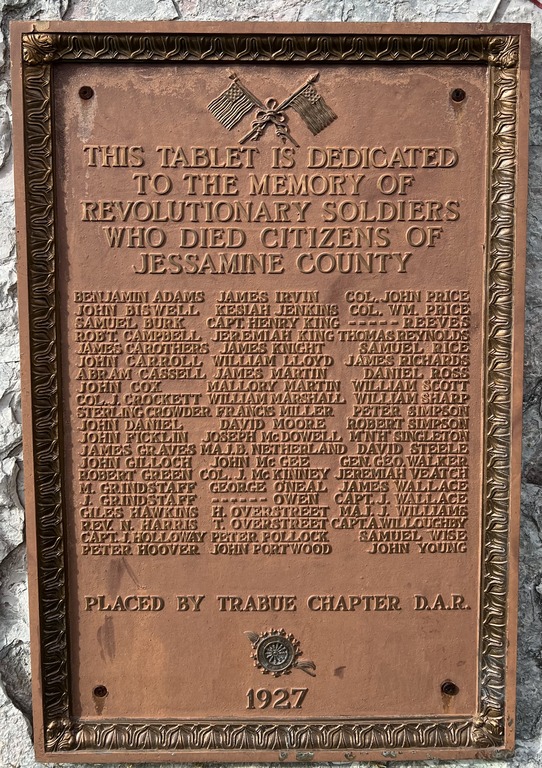Henry OVERSTREET
SAR Patriot #:
P-327274
The following information was assembled from numerous sources and cannot be used directly as proof of Qualifying Service or Lineage.
It is considered a research aid and is intended to assist in locating sources that can be used as proof.
State of Service: VA
Qualifying Service: Private
DAR #: A085089
Birth: 02 Feb 1763 / King William / VA
Death: 02 Apr 1847 / Jessamine / KY
Qualifying Service Description:
- Served in Louisa Co, VA militia 1780, 1781
- CAPTS BYER, BULLOCK, HAYDEN, Colonel SPENCER
- PRESENT AT RUGLEY'S HILL, SOUTH CAROLINA, AND BATTLE OF YORKTOWN
Additional References:
- NSDAR RC # 569075
- Pension Number: *S14069
- Rev War Commissioner letter of 23 July 1929
- Virgil White, "Genealogical Abstracts of Rev War Pension Files, Vol III: N-Z, 1992, pg 2558
- Henry Overstreet; “Virginia soldiers of the American Revolution,” compiled by Hamilton J. Eckenrode, Vol 2, pg 231
Spouse: Sarah Jane/Sally Hornbuckle
Children: Martha;
Members Who Share This Ancestor
| Date Approved | Society | ACN | SAR Member Info | Lineage via Child | View Application Detail | |
|---|---|---|---|---|---|---|
| 2007-06-29 | CA | 27948 | Jerry Lawrence Hereford (166722) | Martha | ||
| 2008-12-12 | AZ | 33408 | Edmund Powell Karr Jr. (160852) | Patsy | ||
| 2008-12-12 | CA | 33409 | Edmund Powell Karr III (160853) | Martha | ||
| 2008-12-12 | AZ | 33410 | David Brian Karr (160854) | Martha/Patsy | ||
| 2009-02-19 | KY | 32031 | Jesse Gordon Moore (162902) | Patsy |
Burial:
UNKNOWN (Unindexed)
Location:
Jessamine / KY
Find A Grave Cemetery #:
n/a
Grave Plot #:
Grave GPS Coordinates:
n/a
Find A Grave Memorial #:
n/a
Marker Type:
SAR Grave Dedication Date:
Comments:
- No grave found in Find-A-Grave 26 Jul 2020
- photo used with permission of Compatriot Mitchell Anderson, 229001, KYSSAR
- Memorial plaque located at Jessamine County, KY Courthouse, coordinates: 37.880730, -84.573070
Directions to Cemetery / Gravesite:
